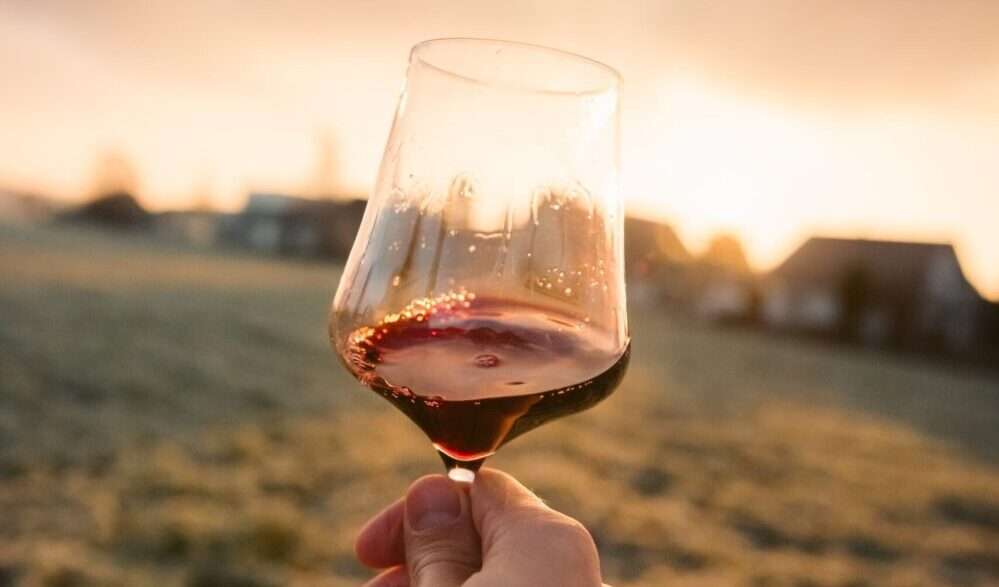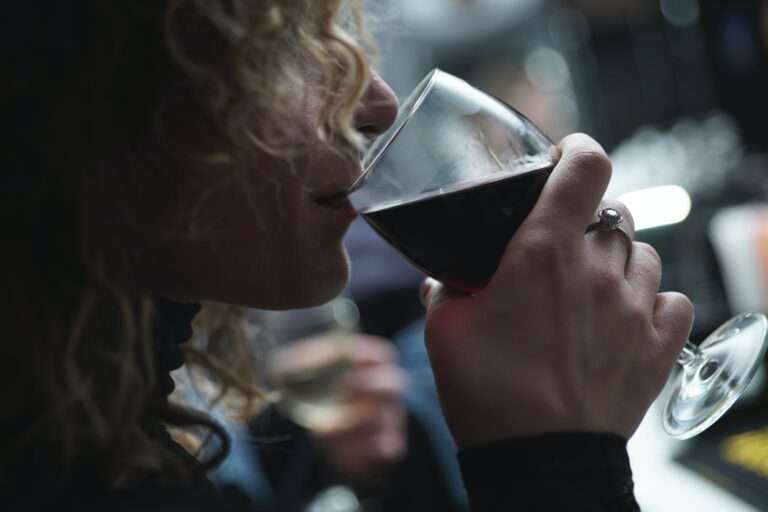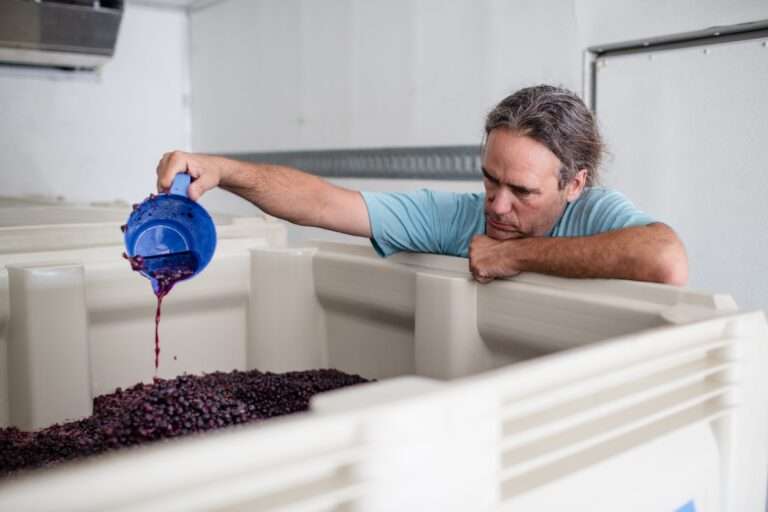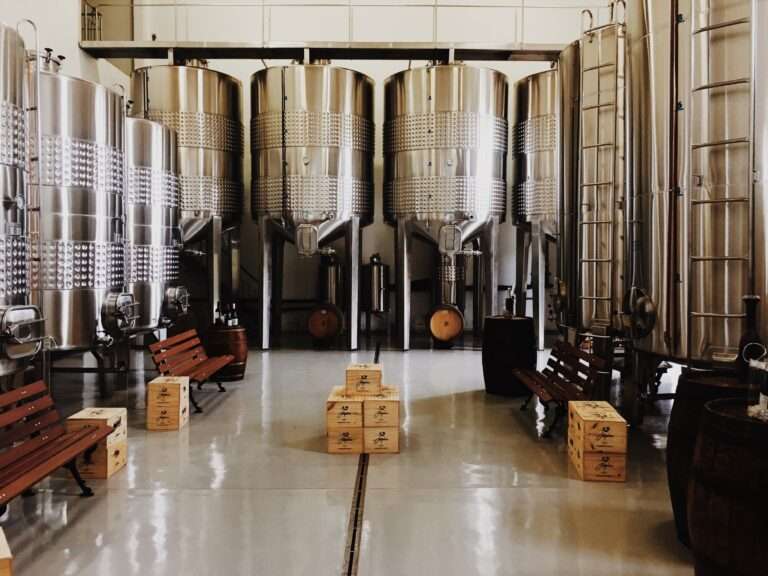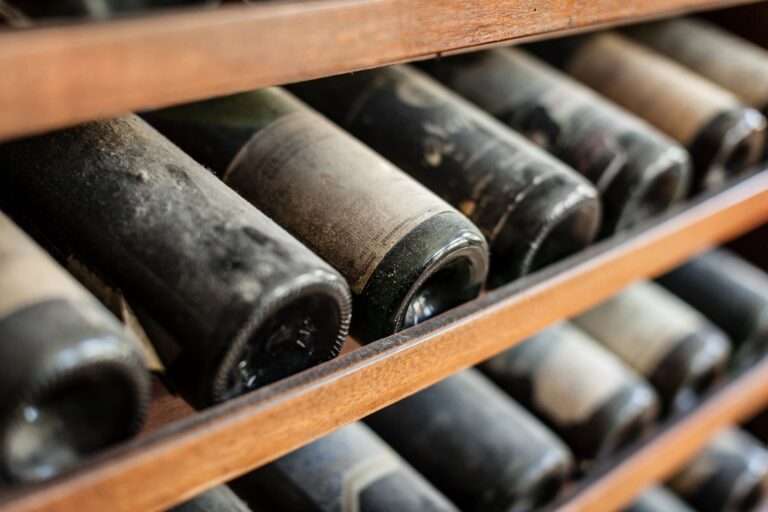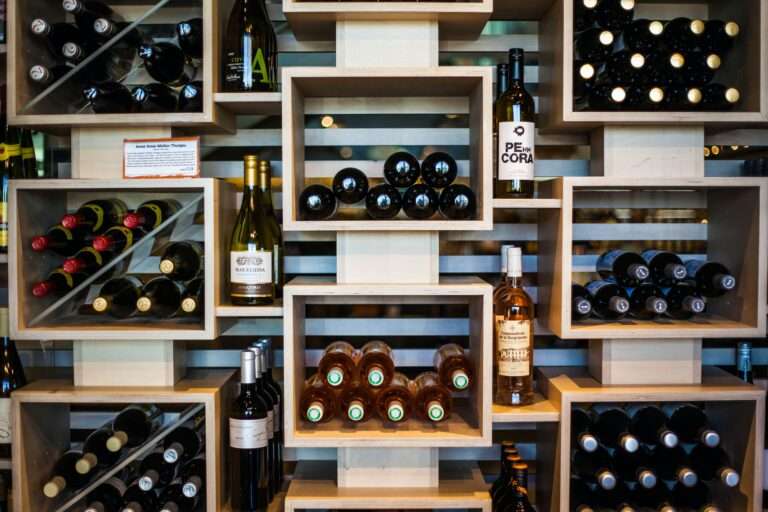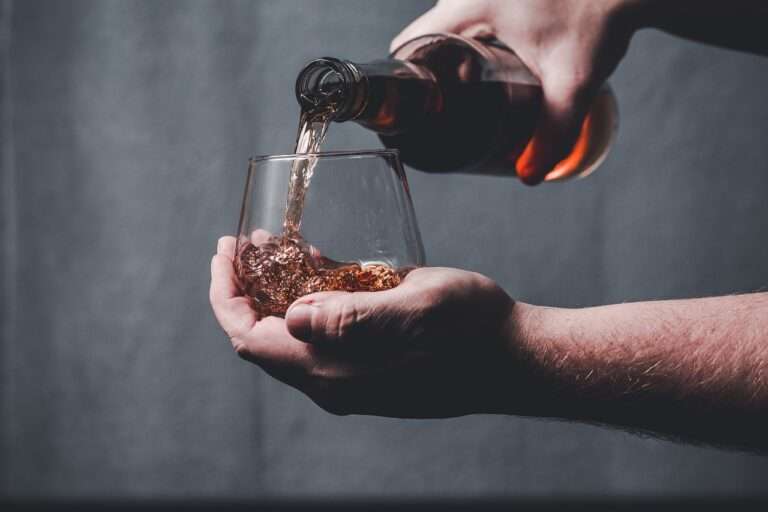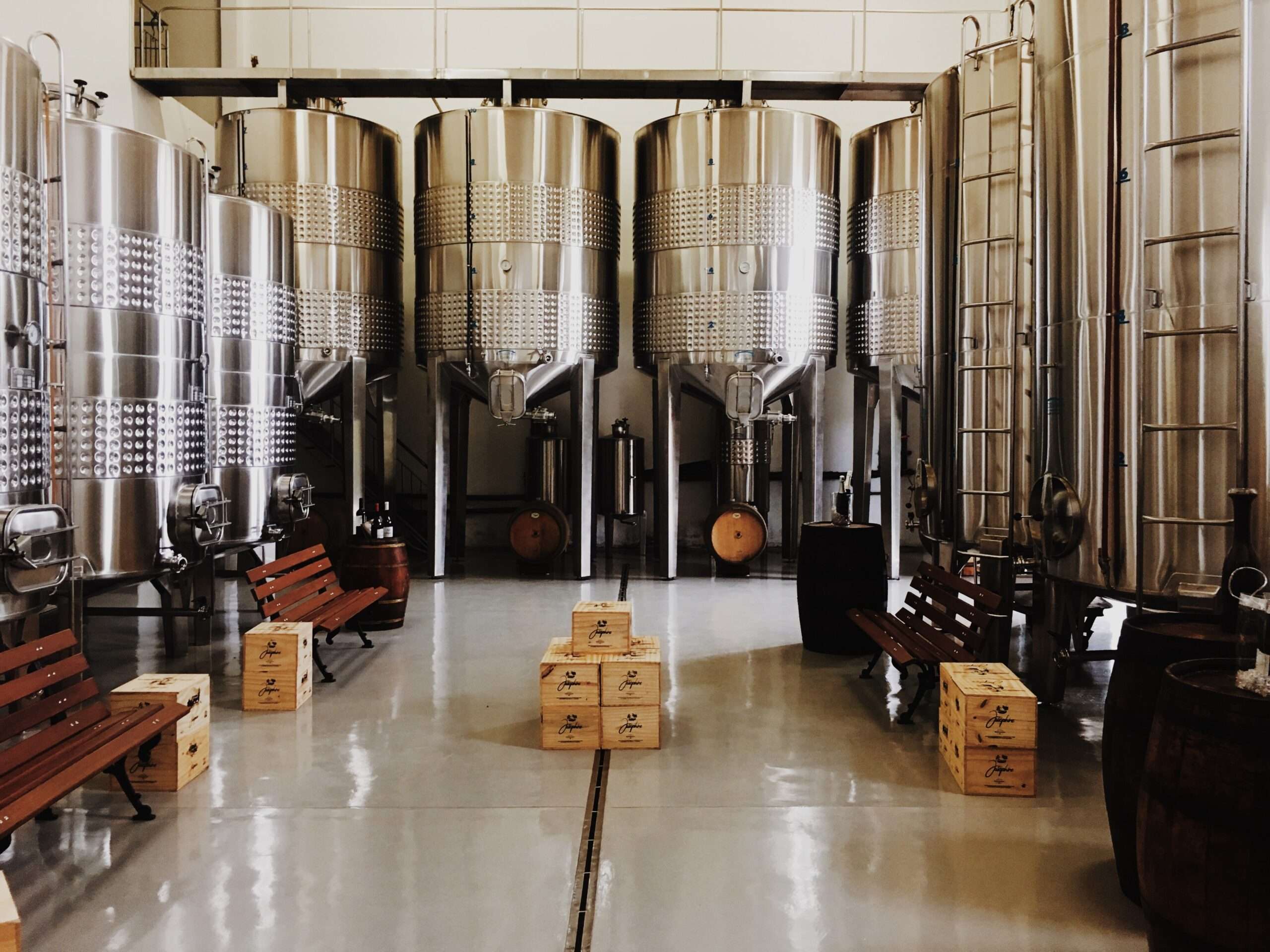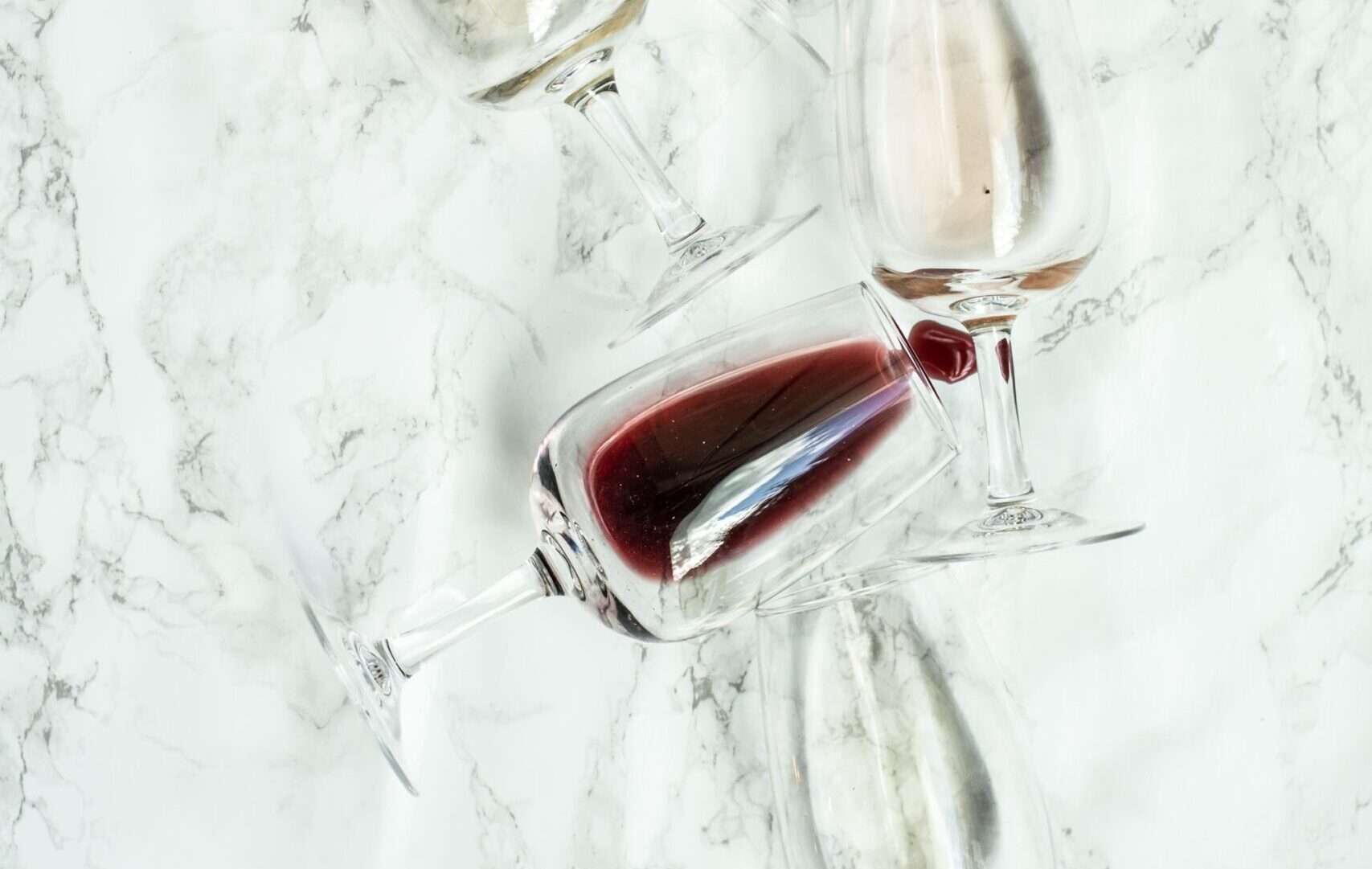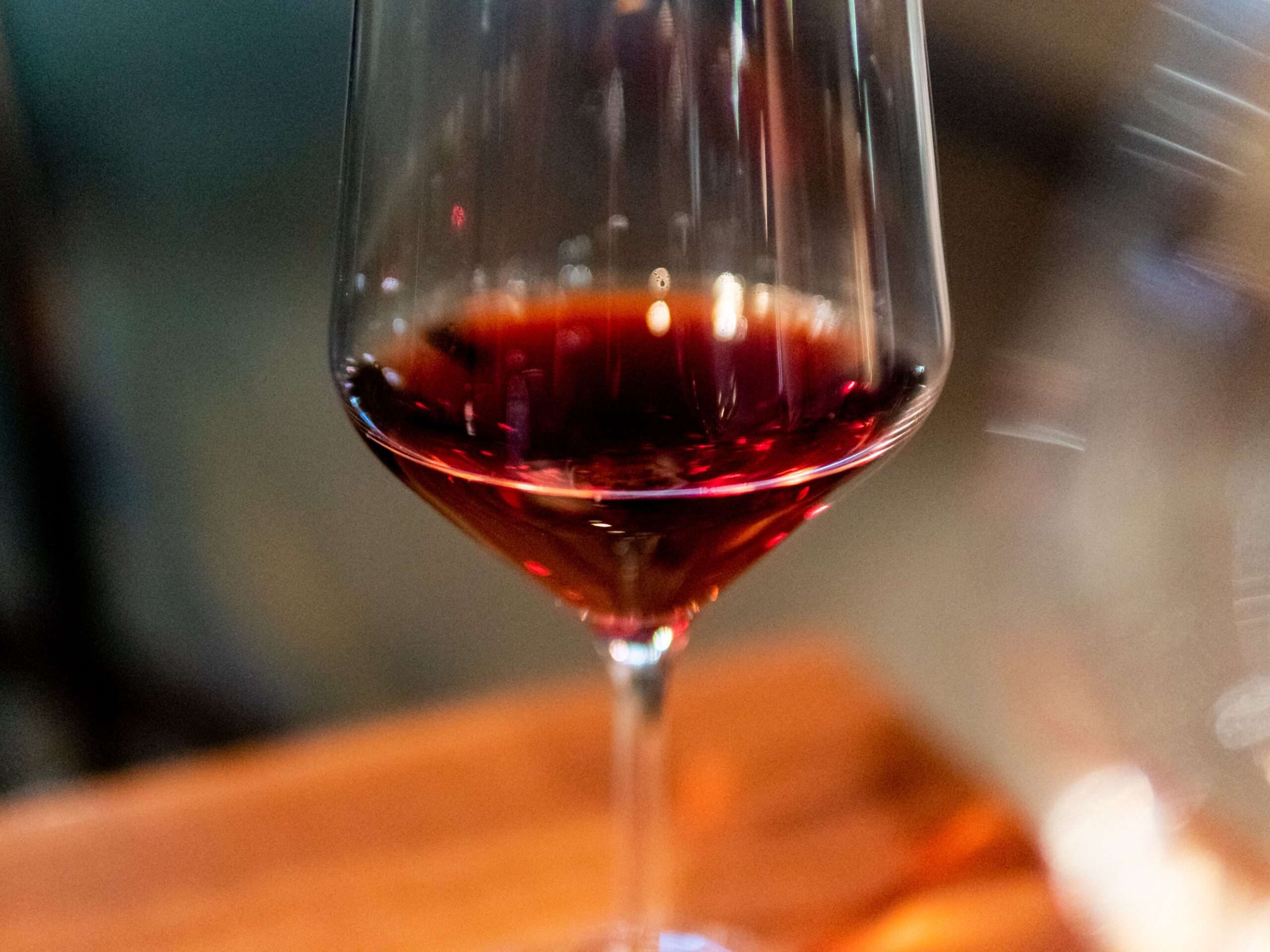One doesn’t even have to be a wine connoisseur to know which wine tingles your tastebuds and which you’d instead pass on. But whether you’re an experienced enthusiast or simply an avid fan, everyone has their favorite varietal of wine they enjoy with their meal at the end of the day or merely a glass when curling up in front of the fire.
A dry wine refers to the residual sugar left in the wine. The sugars found in grapes are converted into alcohol during the fermentation process—the less sugar contained in the wine, the dryer the wine. The opposite of dry wine is a sweet wine, which refers to a wine with higher sugar content.
Regardless of your knowledge of wine, everyone can recognize and enjoy a tasty goblet of wine. But what does it mean when the sommelier refers to the glass of burgundy as a dry wine? How can a liquid be dry?
How To Tell If A Wine Is Dry?
Wine aficionados classify all wines into three categories: dry, sweet, or off-dry, and the main element separating the classifications, is the residual sugar left in the wine after the fermentation process.
The sweetness acuity might sound easy to distinguish. Still, even wine connoisseurs sometimes have trouble differentiating between dry and off-dry wine because so many characteristics affect the wine’s taste.
During fermentation, yeast converts the sugar in the grapes into alcohol. If the winemaker halts the process before all the sugar has been transformed, the wine will have a sweeter taste and ultimately create an experience of less dry wine or sweet wine.
In the end, the characteristic separating the sweet wine from the dry wine is the sweetness meter. If a wine present with below one percent sweetness, it is classified as a dry wine. Wine can be labeled semi-sweet or off-dry, with between three and five percent sweetness in a wine.
Over seven to nine percent sweetness classifies the wine as a sweet or dessert wine.
What Makes A Wine Taste Dry?
The rubber-like taste sensation you experience when taking a sip of dry wine is predominantly a mixed result of the acidity, the tannins, and the sugar content. If you are not a trained wine drinker, you might not be able to tell the difference between the wines just yet since all three things contribute to the dry feeling you experience when enjoying a glass of wine.
- A high acidic level in the wine is generally the result when the winemaker uses young grapes to make his wine. Acidity is a sharpness in the taste that counteracts the sugar and makes it difficult to perceive the sugar volume in your wine.
- Tannins are polyphenol molecules derived from plants, bark, and leaves and create a dry, rubbery perception on your tongue. These compounds are extracted from the grape skins, seeds, and stems during the fermentation process, and the sensation you get in your mouth is vastly different from the acidity in the wine. Tannins cause the mouth to feel dry and have a bitter taste on the side of your tongue.
- However, the main reason a bottle of wine is considered a dry wine is the sugar content per liter. When the fermentation process is stopped before it has finished, the wine retains a residual sugar content from the grapes. The increase in sugar in the wine prevents the dry sensation in your mouth. This characteristic is why wine is classified as sweet instead of dry.
Is Dry Wine Better Than Sweet Wine?
Thanks to varied tastes in humankind, some people prefer dry wine to those who wish to drink sweeter wines. The question of what distinguishes one wine from another depends on the eye of the beholder.
However, some experts consider a dryer wine healthier than sweet wine. This all boils down to the residual sugar. Dry wines are left to finish the fermentation process until all sugars are allowed to be depleted by the yeast. The conclusion is that sweet wines are considered less healthy because of their sugar composition. Factors that differentiate between dry and sweet wines are things like:
- The fermentation time is longer for dry wines.
- There is more residual sugar in sweet wines.
- Because of the sugar content, sweet wines have more calories than dry wines.
- Some wines made from very ripe grapes will give the illusion of a sweet wine when in fact, it’s a dry wine, fooling a person’s sweetness sensitivity.
Is Dry Wine Bad For Your Health?
There has been many myths and legend regarding the health benefits of wine, in particular dry red wine. The links between lowering blood pressure and preventing heart diseases aren’t entirely understood, but the link nevertheless exists. The benefits of moderate wine consumption include some of the following:
- Red wine is rich in antioxidants like resveratrol. This polyphenol helps against inflammation and prevents damage to blood vessels.
- The antioxidants help reduce the “bad” cholesterol called low-density lipoprotein (LDL) cholesterol, the main culprit behind blood clots.
- Antioxidants are also known to fight free radicals and assist in protecting the body against heart disease and coronary failure.
- The resveratrol levels boost the body’s immune system and help to fight off viruses.
- Aiding your body to stay healthier increases your chances of a longer life.
- Even non-alcoholic red wine has been found to lower high blood pressure levels in males presenting with elevated heart disease factors.
Is Dry Wine Stronger?
During the winemaking process, the grapes can ferment until all or most of the sugar has turned into ethanol and carbon dioxide. It serves to reason that the longer the grapes are left to ferment, the more alcohol composition they will have.
Therefore, a dryer wine tends to be higher in alcohol volume because it was allowed to complete its fermentation process, making it slightly more potent than a sweeter wine.
What Is A Semi-Dry Wine?
You have a dry wine with no or minimal residual sugars on one side of the scale. You have a sweet wine with a significant sweet taste on the other side. But then you have the middle between the two variants where you will find a semi-dry or off-dry wine.
These wines have a sugar content of between ten and thirty grams per liter and appeal to wine lovers who neither prefer very sweet nor dry wines.
Within this range of off-dry wines, you will find fruitier wines recognized as sweet wines simply because one generally associates the sweet taste of fruit. More often than not, they don’t have as much sugar as one would assume.
What Varietals Of Dry Wine Can You Get?
Of the varietals of dry white wines, you will find Sauvignon Blanc, Chardonnay, and Muscadet, which contain minimum sugar values and are perfect to be served chilled. Dry white wines are typically crisp and fresh with acidic, fruity flavors. They are light to drink and easy to enjoy with fish, chicken, and pasta dishes.
Dry red wines are bolder in taste and body and are fermented with the skin of the grapes, allowing more tannins into the wine. Ordinarily, dry red wine is a much more acquired taste and is enjoyed with more robust flavors like steak, lamb, and gorgonzola cheese plates. Cabernet Sauvignon, Merlot, Syrah, and Pinot Noir are examples of dry red wines.
What Separates A Dry Wine From A Sweet Wine?
The difference between a dry wine and a sweet wine comes down to one main ingredient: residual sugar. If a wine contains less than ten grams of sugar per liter, it’s considered a dry wine. Anything over thirty grams of sugar per liter is deemed a sweet wine. Any sugar content in between forces the wine to fall under the off-dry category.
How Do You Drink Dry Wine?
Dry wines are ideal for enjoying before or during meals because it has little to no sugar and will not leave a sweetness on your palate. In contrast, sweet wines are more suitable to savor during dessert or accompanied by a cheese platter. To appreciate your wine to its fullest extent, here are a few vital tips to observe.
- Before opening your wine bottle, pay close attention to the cork. It could indicate heat damage if it’s bulging, become stuck in the bottle if deprived of enough oxygen, or even spoiled if the cork is soaked in wine.
- Make sure you have the correct implement to open your bottle. The waiter’s friend (or the wine key) is still ranked as the best gadget on the market for opening your wine bottle.
- Don’t forget to use the fitting wine glass. For instance, a red wine glass has a wide rim and larger bowl than a smaller, U-shape white wine glass. The rosé glass and the sparkling wine glass are also individually crafted for the finest experience.
- Red wines and white wines are served admirably at different temperatures. Most red wines are ideal at between 55-65 °F, whereas white wines are served perfectly chilled at 41-48 °F.
- Over pouring a wine glass could completely spoil your wine tasting experience. Wine drinkers should pour red wines up to about half of the glass, white wines should not exceed a third of a white wine glass, and champagne should reach about two-thirds of the glass.
- Allowing a glass of wine to aerate by swirling it or decanting it into a unique decanter will intensify the aromas and enhance your wine tasting.
- To avoid the heat of your hand warming up the wine, you should hold your glass firmly by the stem while drinking.
- Allow your sense of smell to be the first contact with the wine so you can detect the different aromas before tasting it.
- When it’s finally time to test the wine, sip it slowly or even let it hover and swirl in your mouth so you can recognize the different undertones of the wine.
- Pair your wine with the right food choice to fully relish in combining the flavors.
- Most of all, enjoy the experience and only make it as technical as you want it to be.
- You will train your nose and tastebuds to recognize the different nuances in wines’ various types and varietals.
How Is Dry Wine Made vs. Sweet Wine?
Winemaking is a tedious and slow process. Grapes are left to gradually ferment so that the microorganism called yeast devours the grape sugar turning it into ethyl alcohol and carbon dioxide.
The wine’s underlying flavors depend on the types of grapes used, the currents of aromas in the earth, and the timing of when the grapes were harvested. Some wines are aged in oak barrels or stainless-steel vessels, enhancing the flavors further.
The difference between making a dry wine and making sweet wine lies in the fermentation process. A dry wine results from the yeast thoroughly depleting the sugars in the grapes during the fermentation process and turning the sugars into alcohol.
Whereas if the winemaker interrupts the fermentation process and allows some of the residual sugars to remain in the wine, he will be able to present a sweet wine, the exact opposite of dry wine.
Can A Wine Be Both Dry And Sweet?
The human senses are amazingly intuitive, and the human brain follows deductive reasoning based on past experiences. The main component of dry wine is that it has no or very little residual sugar left following fermentation. Allowing the grape sugars to remain in the wine will automatically make it a sweet wine.
However, many dry wines have fresh, fruity undertones like gooseberry, tropical fruits, or vanilla. These notes awaken memories of sweetness and fool your tastebuds into believing the wine is sweeter than it is. Occasionally the wine will genuinely be very dry, but the flavors prompt the brain to think it’s a sweet wine. Examples of this are some Sauvignon Blanc and Chardonnay varietals.
On the other side of the spectrum, we find wines like Riesling made in Germany with a flowery or fruity bouquet but high acidity. The sharpness in the wine makes the drinker believe it’s a dry wine when it is, in fact, very high in sugar and is considered a sweet wine.
Conclusion
With some practice, there is a wine connoisseur in you yet! The subtle nuances of the aromas and the slight detection of an undertone in the wine make it seem like a mystery you need to solve.
However, the biggest denominator that identifies a dry wine is whether you can determine if there is any residual sugar. Once you distinguish between the dry wines and the sweet wines, a new world will open up, taking you on one adventure after another.

